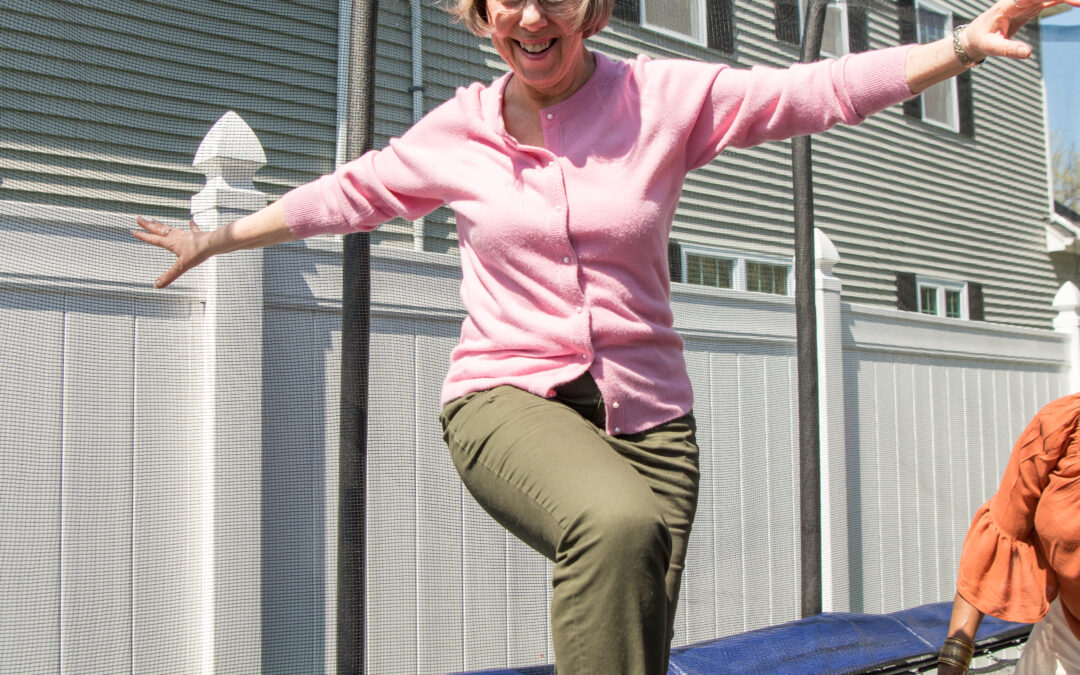April is National Occupational Therapy Month and Seniors Helping Seniors® in-home care services is taking a moment to champion this life-changing treatment. Occupational therapy (OT) helps people of all ages maintain, or regain, the skills necessary to perform everyday activities.
Similar to its better-known counterpart, physical therapy, OT provides a number of benefits throughout the body. Where the two differ most is in their purpose. Physical therapy focuses on improving pain in one part of the body, while occupational therapy is focused on adapting daily tasks to make them easier. For our care receivers, that means doing more of the things you love most!
Let’s explore the ways this branch of therapy can help our active senior community continue to reap the rewards of an independent lifestyle!
Physical Benefits
Occupational therapy helps strengthen the body by increasing flexibility, re-conditioning muscles, and teaching adaptive movements that put less stress on muscles and joints. Here’s a closer look at the physical advantages of OT.
Enhanced Range Of Motion
As a senior, improving flexibility can change a lot! Stretching allows the body to be less rigid. In turn, this decreases the chances of injuries like a muscle strain or pull. It can also make daily tasks – such as vacuuming, gardening, or walking – easier to complete.
Treatment to better range of motion can include a number of methods. For example, to improve shoulder flexibility, an occupational therapist might suggest seniors complete a series of stretches, practice dressing the upper body, and work on strength training exercises for that area.
Decreased Chronic Pain
When you lead an active and fulfilling life, chronic pain, like arthritis and muscle aches, can really slow you down. Getting support from an occupational therapist can help, however.
To assist with pain management, these professionals demonstrate adaptations for the activities that are most important to everyday life. The technical terms for these strategies include things like reduced muscle tension, ergonomics, safe body mechanics, and neuromuscular re-education. Simply put, these methods are alternative ways to complete tasks with less strain, and therefore pain, on the body.
Maximize Mental Health
The advantages of OT far surpass physical improvements. Cognitive functions like memory and brain capacity can see an uptick as well! It can even help relieve stress and anxiety.
Better Memory And Increased Brainpower
Occupational therapists are trained to evaluate thinking skills in addition to physical abilities. Again, there are a variety of techniques that can be used to improve cognitive function.
Memory-enhancing activities like crossword puzzles and brain teaser games are often encouraged to keep the mind sharp. An occupational therapist may also break challenging tasks down into a series of simple steps and cues, making them easier to complete for those with memory loss.
Additionally, occupational therapists can work with seniors on exercises that improve vision. It might not seem closely connected to memory and brainpower, but enhanced sight allows seniors to gather and process information more easily, benefiting cognition.
Reduced Stress And Anxiety
With age, the ability to perform everyday tasks often declines, taking a toll on mental health. You or a senior loved one might start to feel helpless and depressed due to this loss of function.
An occupational therapist, however, will focus on the tasks that CAN be completed, inspiring seniors with a sense of empowerment! As for weaker skills? OT is utilized to identify these and work to improve them.
Adaptive Living
Ultimately, the goal of occupational therapy is to enable individuals, seniors included, to live comfortably and independently. Improving physical and mental wellbeing is certainly helpful in retaining personal freedom, but OT extends beyond this.
Home Modifications
Not only will occupational therapists work with the body and mind to make life easier, they will also assist in adjusting areas of your home, or that of a senior loved one, with the same end goal. Here are some ways these professionals might alter a living space for better daily functionality:
- Suggest safety improvements, like adding handrails in bathrooms, increased lighting, and clearing clutter from walking paths
- Re-label medications, cooking items, and cleaners so they’re easier to distinguish for individuals with sight loss
- Add visual cues throughout the home to help those with memory loss or dementias navigate and complete tasks
Shared Knowledge
Occupational therapists often encourage family members and caregivers to become familiar with the exercises their senior loved one has been practicing during OT. This ensures improvement doesn’t stop at the end of a session.
The more seniors can incorporate occupational therapies into a daily or weekly routine, the easier it will be to stay physically active, mentally fit, and autonomous. Seniors Helping Seniors® caregivers are happy to assist those we serve with the strategies learned through occupational therapy. From helping complete daily exercises to adaptive strategies, we’re here for you or the special senior in your life!

